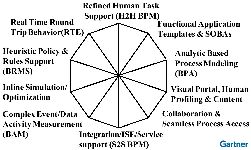I just received an email from a recently-graduated engineer in Germany, looking for advice on how to become a credible resource on BPM projects with only theoretical BPM knowledge and a lack of business knowledge — in other words, how to ramp up from being a newbie with a decent technical degree into an experienced BPM consultant. I didn’t want to send off some flippant answer about long years of hard work, so I spent some time thinking about a few of the key things that I did (and still do) to turn myself from a techie with an engineering degree into a BPM architect who spends as much time thinking about business as I do about technology.
My advice to him:
First, research constantly about BPM, particularly case studies. There are lots of great resources on the web, such as BPMG, that have articles on everything that you would want to know about BPM, including real live case studies. Attend a BPM conference or two, such as ones by BPMG or Gartner, listen to more experienced people talk about what they’ve done, and make some contacts that you might be able to call on when you need some free advice.
Second, do some technical research into a few major BPM products, so that you can become somewhat of an expert on how BPM products work even if you haven’t worked with them. Many BPM vendors are very happy to have you learn more about their products, and if your target customers typically use a specific product (such as FileNet or Tibco), then research the technology behind that product or even attend vendor training so that you can stay one step ahead of your first customer on the technical side.
Third, learn more about your customers’ business. For example, most of my customers are in financial services and insurance, and I have become an expert on the business processes in these organizations through research and observation, even though I have never worked for a financial company (I’ve always worked for — or owned and operated — software or service companies). Even if you don’t have a contract with a potential customer yet, offer to come in and do a brief walk-through and analysis of their operations. Sit down with some of the people while they are working and ask them what they are doing, and why they’re doing it: that’s the best way to learn about the details of a business process. Very often, an outsider can observe something in a business that someone in the company won’t see, so you may be able to tell them something about their business that they don’t know after just a brief walk-through, if you’re observant.
Lastly, focus on the business issues, not the technology. If you are consulting on BPM directly to an IT department rather than a business department, the project has a high probability of failure: remember that the “B” in BPM stands for “Business”, and you have to stay focussed on what value that you are bringing to the business in order to successfully implement BPM.
I finished up my email by telling him that there is no real substitute for experience, but it’s possible to educate yourself about BPM in a way that provides obvious value to prospective customers. Many people in the customer organizations (even in the IT department) don’t have formal systems training, so this is a good opportunity to put to use all those analysis and problem-solving skills that they taught us in engineering, just applied to business instead of technical problems.


